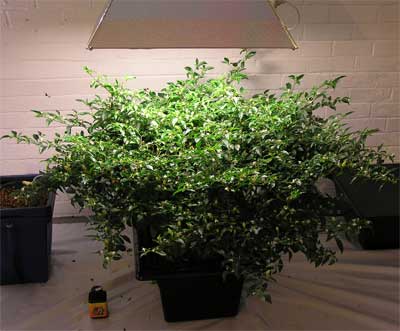Strawberries are great for hydroponics. They are big feeders when fruiting and hydroponics is the best way of getting nutrient to them as and when they need it. Many strawberry farmers are now turning to hydroponic systems. Reasons for doing so include growing vertically which maximises space and makes picking far easier and, chiefly, the quality of fruit. Due to the imminent banning of certain key insecticides used in strawberry production, many farmers are turning to hydroponics to prevent soil borne insects and diseases without having to use chemicals. Hydroponic growers enjoy large, sweet and flavoursome fruits and those using artificial lighting alone or in addition to natural light in a greenhouse can enjoy heavy fruiting seasonal varieties all year round.
Strawberries are not actually a berry but an aggregate fruit, a bunch of small seeded fruits joined together. Berries are fruits that contain seeds within an ovary that has swollen to become an edible flesh, like a grape or an avocado. Contrary to what some people think, they don't get their name from having been grown in straw; they were called strewberries because of the way they "strew" or spread out runner plants.
Runner plants are little baby plants that grow from an "umbilical" stem and then root themselves as genetically identical clones of the mother plant. Many plants do this including spider plants and some orchids. Strawberries send some runners out while flowering but create them in earnest when flowering has ended. Mother plants can be encouraged to put out runners by clipping flowers as soon as you see them.
Runners are the best method of propagating strawberries as they are an identical clone of the, hopefully, successful plant they have been cut from. Seeds take at least a year usually two to establish and results are varied. The runners should be cut when the first roots start to appear. Once well rooted, they need to be wrapped and chilled (32-45F...fridge temperature) for at least three weeks to simulate winter and encourage them to flower and fruit.
Strawberries are very day length dependant and are classed in this way. Everbearers fruit moderately whenever they have more than 12 hours daylight. June bearers produce one large crop at one point in the year and come in early, mid and late cultivars; these are the most day length dependant. Day length neutral strawberries produce small but flavoursome fruits at any point of the year as long as temperatures do not exceed 75F. Always select pre-chilled runners marked disease free from a reputable nursery. Growing similar strains together is a good idea because cross pollination makes fuller, healthier fruits.
I am growing an everbearer of indeterminate strain (a donation!). I grew it alongside another everbearing cultivar, Aromel, and the fruit was better for the cross pollination. I have to pollinate with a small paintbrush, we have no bees in the shop. The daylengths did not match though and after flowering once, the Aromels went straight into producing runners and never flowered again. They were also a cheap batch from a nursery I didn't bother to check and I'm sure they were responsible for an infection of spidermite that I have been battling since. I was growing the two together in an
NFT system I was displaying. Here are some pics of how they were doing, you can see all the runners trailing down:



That system was nothing but trouble and leaked a gallon a day as well as being seemingly designed for growing algae! NFT is done best by
Nutriculture...this one is rubbish. Eventually, about a month ago, it clogged up and leaked 150L of nutrient all over the floor one weekend. (No names...I still stock lots of other, useful things from the same supplier so: Nothing personal!).
They struggled with the mites, poison and the shock of new systems/media/feed but recovered and continued to fruit. I threw away the following batch of fruit because I was paranoid about the miticide. They have a way to go to get back to full health but they are well on the way:
and finally a picture of the usual weekly harvest since June; it would be double if I'd included the ones I eat over the week....growers privelege. Typically, strawberries deteriorate in productivity over three years as more crowns and runners crowd the plant out. I am interested to see how long I can keep these going for.
Next time - Herbs























